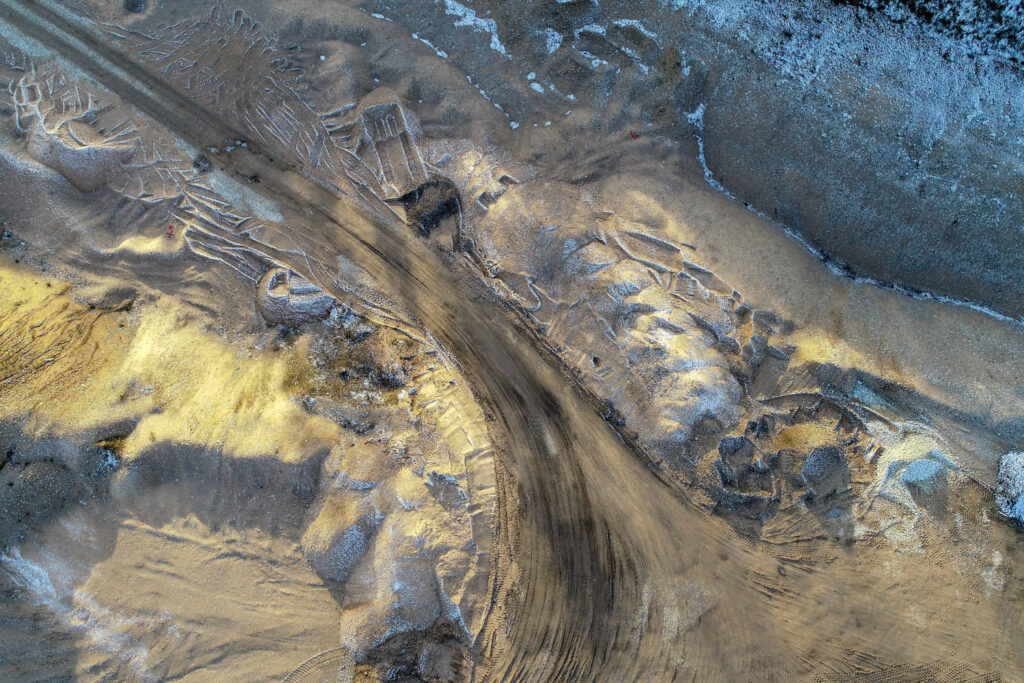Mineral Resources

Mineral resources are valuable, naturally occurring concentrations of solid, inorganic or organic materials in the Earth’s crust that can be extracted and processed for economic profit. They are non-renewable on a human timescale and form the raw materials for most modern infrastructure, industry, and technology
We require metals for making machines, sands and gravels for making roads and buildings, sand for making computer chips, limestone and gypsum for making concrete, clays for making ceramics, gold, silver, copper and Aluminum for making electric circuits, and diamonds and corundum (sapphire, ruby, emerald) for abrasives and jewellery
Mineral resources are generally classified into two main categories:
- Metallic Minerals: These are sources of metals that are often found as ores and valued for properties like conductivity, malleability, and strength. Examples include iron, copper, gold, Aluminum, nickel, and rare earth elements.
- Non-metallic Minerals (Industrial Minerals): These are materials valued for their physical or chemical properties when used directly in products. Examples include sand, gravel, limestone, gypsum, salt, clay, and phosphate rock.
- Energy Minerals: While sometimes considered separately, these are non-renewable resources used as fuel sources. Examples include coal, petroleum (oil), natural gas, and uranium.
Australian Mining Product and Services understand that the future of mineral resources mining depends not just on efficiency, but also on innovation. Our focus is on providing high-quality products and solutions that make extraction safer, more cost-effective, and environmentally responsible. By combining durable equipment with cutting-edge practices, we help mining operations achieve maximum productivity while reducing waste and environmental impact.
Mineral resources are crucial and are used in nearly every aspect of daily life:
- Infrastructure and Construction: Sand, gravel, and crushed rock are used for roads and concrete; limestone for cement; clay for bricks and tiles; and metals like iron (steel) for buildings and vehicles.
- Technology and Electronics: Metals such as copper, gold, and silver are crucial for electrical wiring and circuits; lithium, cobalt, and nickel are used in batteries for portable electronics and electric vehicles; and silica is fundamental for computer chips and glass.
- Agriculture and Health: Potash and phosphate rock are vital ingredients in fertilizers; gypsum is used in plaster for casts; and minerals such as calcium, iron, and zinc are essential for human health as dietary minerals.
- Energy Generation: Coal, oil, and natural gas are primary fuels for power plants and transportation, while minerals like uranium, rare earth elements, and copper are necessary for nuclear, wind, and solar energy technologies.
Extraction methods
- Surface mining: Also known as open-pit or strip mining, this method is used for deposits near the surface. It involves removing overlying soil and vegetation to access the ore.
- Underground mining: This approach is used for deeper deposits, involving the creation of shafts and tunnels to access the ore.
- Placer mining: This method is used to extract heavy minerals from sand and gravel deposits, often found in riverbeds.
- In-situ leaching (or solution mining): This technique involves dissolving the mineral in the ground and pumping the solution to the surface.
Processing and environmental considerations
- Processing: Once excavated, the raw ore is processed to separate the desired minerals from waste rock. This can involve techniques like crushing, sifting, and chemical treatments.
- Waste rock: The leftover material, known as waste rock or tailings, is often piled in waste dumps.
- Tailings dams: After processing, the waste slurry is often pumped to a tailings dam, where water evaporates. These can pose environmental risks due to potentially toxic substances, such as unextracted sulfide minerals or chemicals used in processing.
- Social and economic impact: Mining can provide jobs in remote areas but often involves low wages and high-risk work. Communities in these areas may lack the resources to address the environmental consequences of mining.
Mining Products We Offer
Australia Mining Product and Services provide a wide range of products to support mineral resources mining at every stage of the operation, with a focus on reducing downtime, decreasing costs, improving safety,- Wear Linings: Essential for protecting equipment surfaces against abrasion and impact, ensuring longer service life in tough mining environments.
- Fluid Handling: Enables efficient transport of slurry and liquids during extraction and processing. Durable solutions help minimise leaks and downtime.
- Pipe Repair Bandage: Provides quick, reliable repairs to damaged pipes, reducing costly shutdowns in mineral processing plants.
- Magnetic Wear Patch: A flexible solution for protecting steel surfaces from wear in chutes and hoppers, extending the life of mining equipment.
- Screening Media: Play a critical role in separating valuable minerals from waste material during processing, improving accuracy and throughput.
- Motorised Pulleys: Compact and efficient, they provide reliable drive power for conveyor belts used in mineral resources extraction.
- Pneumatic Rotary and Linear Vibrators: Enhance material flow in bins and hoppers, minimising blockages and ensuring uninterrupted production.
We manufacture and supply sites around Australia










